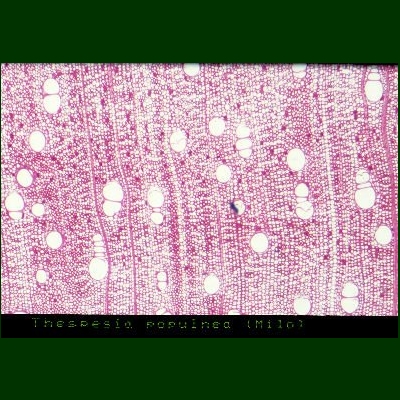 Hawaiian Name(s): milo
Hawaiian Name(s): miloScientific Name: Thespesia populnea
Vernacular Name: portia tree
Family: Malvaceae
Status: indigenous?
Authority: (L.) Sol. ex Corrêa
Description: Tree/shrub to 13 m tall.
Habitat Found between 0–275 m in protected coastal sites on most main islands (Wagner et al. 1990:902).
Medicines:
Non Medicinal Uses: Milo may have been brought by the Polynesians for wood and fiber (Wagner et al. 1990:902); made into "beautiful bowls" for poi (Krauss 1993:22; Malo 1951:23); fruit for yellowish-green dye (Krauss 1993:66); canoe hulls (Abbott 1992:80). Young leaves edible (Lucas 1982: 56). In the Ethnology Collection at Bishop Museum there is a post-contact example of the wood made into a bowl. An archaeologial site on Lāni‘i yielded a house post identfied as milo.
Specific gravity of wood: 0.6
Famous Locations: There were apparently many milo surrounding the home of Kamehameha I at Waikiki.
Mele:
`Ōlelo Noeau: He milo ka la‘au, mimilo ke aloha. Milo is the plant; love goes round and round.
Dye Color and Parts: Yellowish green (fruit wall)
Kino lau:
Location on Bishop Museum Kalihi Campus:
Propagation Information: Hawaiian Native Plant Propagation Database.
Native Plants Hawaii.
Seed: Seed length approximately 8.4 mm. Photograph: B.Kennedy.

Microscopy
Cross Section: Field of view: 2.6 mm x 1.6 mm. Photograph: H.Lennstrom.

Radial Section: Field of view: 2.6 mm x 1.6 mm. Photograph: H.Lennstrom.

Tangential Section: Field of view: 2.6 mm x 1.6 mm. Photograph: H.Lennstrom.

